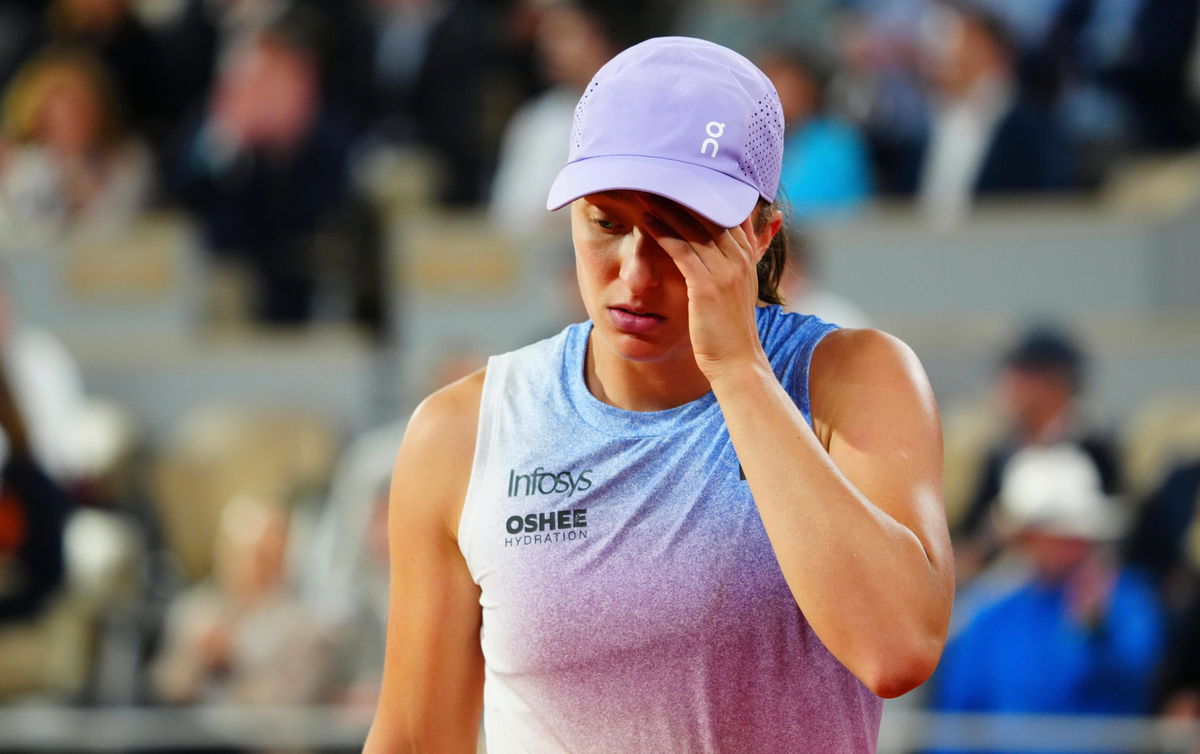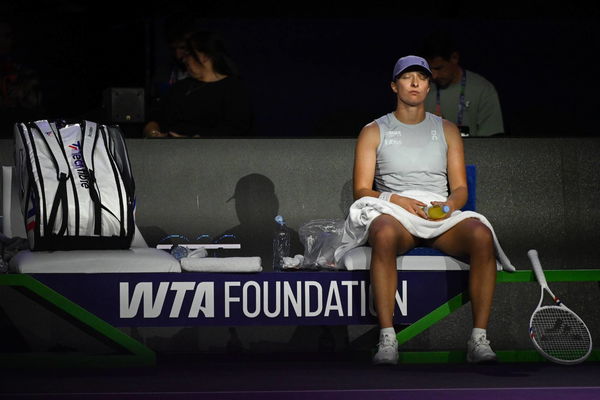
Imago
Iga Swiatek French Open Tennis, Day Twelve, Tennis, Roland Garros, Paris, France – 05 Jun 2025 EDITORIAL USE ONLY No use with unauthorised audio, video, data, fixture lists, club/league logos or live services. Online in-match use limited to 120 images, no video emulation. No use in betting, games or single club/league/player publications. PUBLICATIONxINxGERxSUIxAUTxHUNxGRExMLTxCYPxROUxBULxUAExKSAxCHNxDENxINDxITAxPORxESPxSWExTURxMEXxCOLxVENxPERxECUxBRAxARGxCHIxURUxPARxPANxONLY Copyright: xJavierxGarcia/Shutterstockx 15337995fp

Imago
Iga Swiatek French Open Tennis, Day Twelve, Tennis, Roland Garros, Paris, France – 05 Jun 2025 EDITORIAL USE ONLY No use with unauthorised audio, video, data, fixture lists, club/league logos or live services. Online in-match use limited to 120 images, no video emulation. No use in betting, games or single club/league/player publications. PUBLICATIONxINxGERxSUIxAUTxHUNxGRExMLTxCYPxROUxBULxUAExKSAxCHNxDENxINDxITAxPORxESPxSWExTURxMEXxCOLxVENxPERxECUxBRAxARGxCHIxURUxPARxPANxONLY Copyright: xJavierxGarcia/Shutterstockx 15337995fp
“The scheduling is super intense. It’s too intense. There’s no point for us to play over 20 tournaments in a year,” Iga Swiatek said back in June. But five months later, the schedule has not improved; it is still hectic and, in many ways, even worse. Swiatek has already played 79 matches in 2025 and still has the Billie Jean King Cup ahead. This only confirms how physically and mentally draining the current WTA calendar has become. Now, she has found support from a former Wimbledon finalist.
Watch What’s Trending Now!
Ons Jabeur, who once ranked No. 2 in the world, shared with Sky Sports, “This schedule is destroying everyone. I no longer allow myself to be dictated to by what I can and cannot do. I suffered greatly, more mentally than physically. My body cried out for help for a long time and I didn’t listen,” Jabeur admitted. She emphasized that two-week events and back-to-back tournaments like Doha and Dubai push players to their limits. Her words clearly show, Swiatek is not the only one questioning the status quo, and that change might be long overdue.
Inspired by Jabeur’s support, Iga Swiatek made a bold announcement about her future calendar. “Enough. I won’t look anymore. Next year, I will arrange the calendar as I see fit,” she declared. She acknowledges that while WTA management knows the schedule is “exaggerated,” contractual obligations make immediate adjustments difficult. “The process is certainly complicated, and I’m not getting into it,” she added. Hence, she is prioritizing her health and well-being first.
ADVERTISEMENT

Imago
WTA, Tennis Damen Finals 2025 in Riyadh – Day Three RIYADH, SAUDI ARABIA – NOVEMBER 3: Iga Swiatek of Poland rests against Elena Rybakina of Kazakhstan during their second group-stage match on Day 3 of the 2025 WTA Finals, part of the Hologic WTA Tour, at King Saud University Indoor Arena in Riyadh, Saudi Arabia, on November 3, 2025. Artur Widak / Anadolu Riyadh Saudi Arabia. Editorial use only. Please get in touch for any other usage. PUBLICATIONxNOTxINxTURxUSAxCANxUKxJPNxITAxFRAxAUSxESPxBELxKORxRSAxHKGxNZL Copyright: x2025xAnadoluxArturxWidakx
Jabeur also opened up about her own struggles with depression and how taking a break from tennis became essential. “Putting myself first was key to recovery,” she said. Her story mirrors Swiatek’s, showing that even the top players are vulnerable under an unforgiving schedule. Their combined experiences highlight a crucial point: significant reform of the WTA schedule is required to safeguard the mental and physical well-being of players. Will the organization take action? That is still an open question.
The schedule is brutal on its own. The top players must play six events of 500; around ten events of 1000, and the four grand slams. If you look closely, the length of the season is much longer than tournaments, and this has led to a reduced number of off-weeks. And of course it is challenging. Moreover, the constant presence of long matches, travel, and changing surfaces makes it worse. Even if a tennis player misses any important events, the consequences are harsh. And the players without approved exemptions receive zero points, which may reduce their ranking.
ADVERTISEMENT
The comments by Iga Swiatek and Jabauer reveal that there is a major problem in women’s tennis that the WTA cannot afford to ignore, as there is strain, exhaustion, and ranking pressure. This is, however, not a female tennis-only issue, as male tennis is also grappling with it.
ADVERTISEMENT
Tennis’ grueling schedule pushes Iga Swiatek, other stars to the limit
According to world No. 1 Aryna Sabalenka, the crowded tennis schedule is “crazy,” and the sport’s governing bodies should “do something” about it. Sabalenka had to withdraw from Wimbledon last year due to a shoulder injury brought on by the demanding schedule. She also acknowledged that she missed the China Open in Beijing because she was “exhausted.” “The scheduling is crazy, it’s really tough to handle,” she said. “We definitely have to do something because if you play at a high level and go far in tournaments, at some point your body is gonna give up. It’s just too much pressure, physical and mental.”
Carlos Alcaraz, who withdrew from the Shanghai Masters citing “physical issues,” also criticized the hectic schedule. He emphasized the pressure on top players as the season draws to a close, pointing out that even Iga Swiatek and other top players have voiced their concerns about the workload.
Top Stories
Grand Slam Presenter Found Dead as Grieving Family Releases Statement

18-Year-Old American WTA Player Suspended For Same Substance as Jannik Sinner

Danielle Collins to Miss Australian Open After Revealing Emotional Egg Freezing Decision

Daria Kasatkina Boldly Calls Out Men’s Tennis Due to Carlos Alcaraz-Jannik Sinner Dominance

Carlos Alcaraz Denied Novak Djokovic Record After Breaking ATP’s Strict Policy

The toll is highlighted by recent tournaments: Daniil Medvedev and Lorenzo Musetti both withdrew mid-match, and five players retired from matches at the China Open alone due to injuries. The worries were echoed by Alcaraz, who also suffered an ankle injury at the Tokyo Open earlier in the season: The schedule is really tight. They have to do something with the schedule.” It is hard to overlook the pressure on elite players as injuries in both men’s and women’s tennis continue to rise.
ADVERTISEMENT
ADVERTISEMENT
ADVERTISEMENT
ADVERTISEMENT

